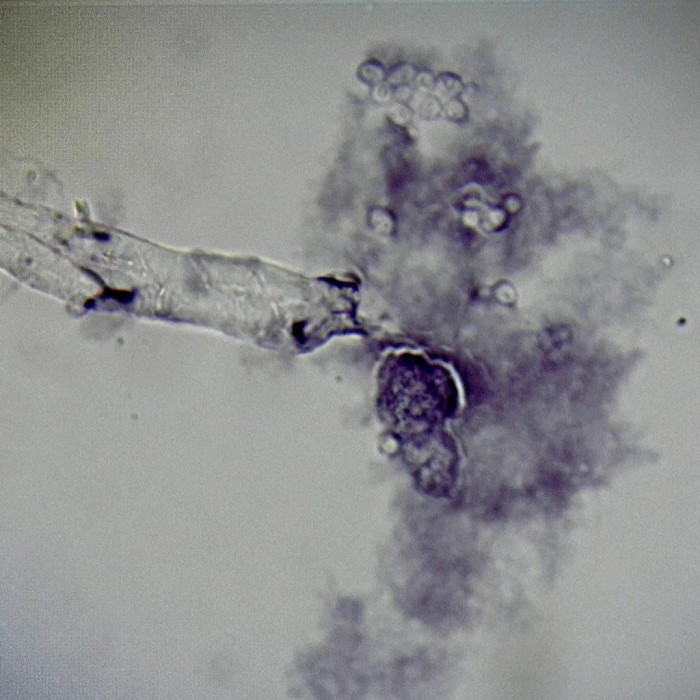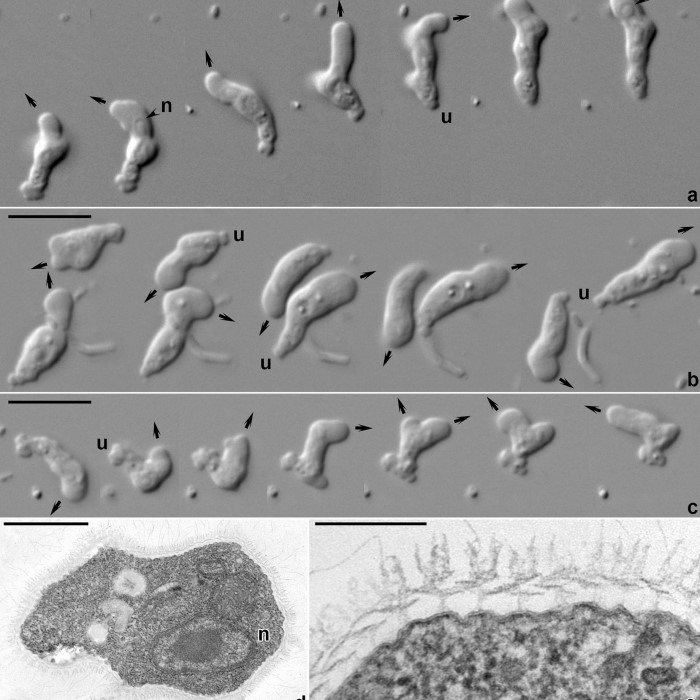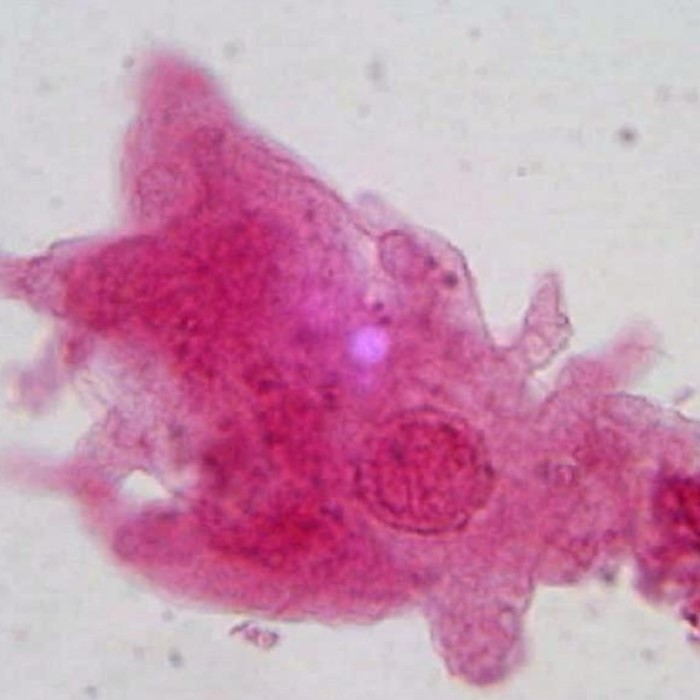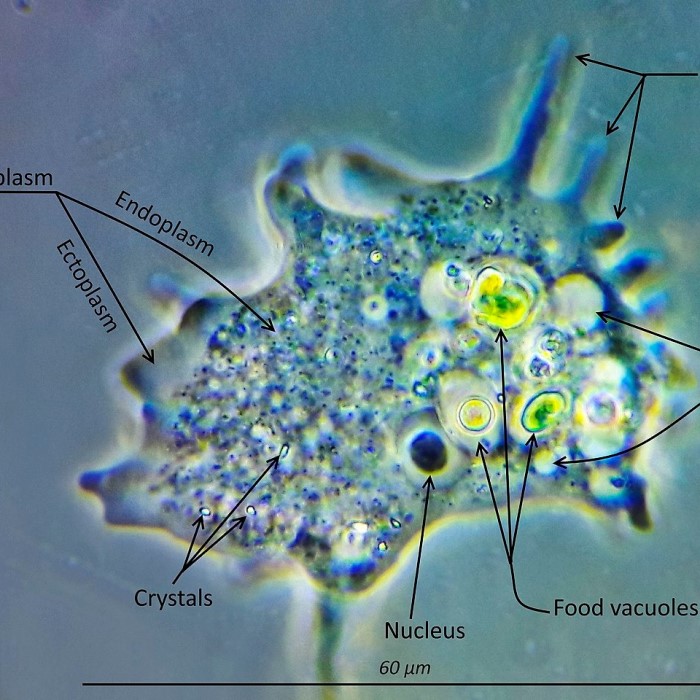Introduction to Amoebas
Amoebas are single-celled organisms with a flair for adaptability. These microscopic entities have fascinated scientists for years. Known for their shape-shifting abilities, they adjust their form as they move and feed. In a water drop, their world thrives, unseen by the naked eye. Amoebas live in various environments, from freshwater to soil. Their remarkable survival strategies contribute to the complexity of ecosystems. By zooming in with a microscope, we unveil the amoeba’s hidden realm. Here, the seemingly simple life forms reveal intricate behaviors. The observation of an amoeba under microscope is more than academic. It is a journey into the microcosm that mirrors larger life processes.
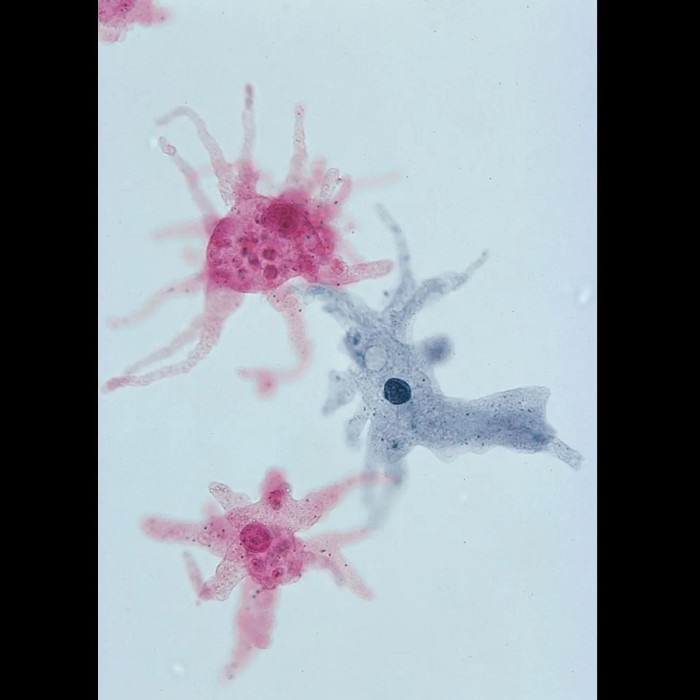
The Amoeba’s Microscopic Structure
Observing the Amoeba:
When viewed under a microscope, the amoeba reveals a fascinatingly complex structure that showcases the intricacies of single-celled life.
The ability to observe such details magnifies our appreciation for this tiny organism and its biological processes.
Outer Membrane:
The amoeba is surrounded by a flexible outer membrane known as the plasma membrane.
This plasma membrane not only encloses the cell’s contents but also allows the amoeba to alter its shape, enabling it to navigate through its environment.
Cytoplasm:
Inside the plasma membrane lies the cytoplasm, a jelly-like substance that occupies the majority of the cell‘s volume.
The cytoplasm serves as a medium for various biochemical reactions and houses several organelles crucial for the amoeba’s life functions.
Nucleus:
The nucleus acts as the control center of the amoeba, containing its genetic material.
Under microscopic observation, the nucleus appears as a prominent dark spot within the cytoplasm, signaling its importance in regulating cellular activities and heredity.
Vacuoles:
The cytoplasm also contains vacuoles, which are specialized compartments responsible for storing food and waste materials.
These vacuoles play a pivotal role in the amoeba’s nutrient management and waste disposal, maintaining cellular homeostasis.
Phagocytosis:
Amoebas obtain food through a unique method known as phagocytosis, where they envelop food particles with their plasma membrane.
This fascinating feeding process becomes visible under high magnification, demonstrating the amoeba’s adaptability in acquiring nutrients.
Mitochondria:
Mitochondria are another essential component, providing energy to the amoeba through the process of respiration.
These organelles are often referred to as the powerhouse of the cell, highlighting their critical role in energy production for cellular activities.
Specialized Structures:
Some amoebas possess specialized structures like contractile vacuoles, which are essential for expelling excess water.
These contractile vacuoles help maintain osmotic balance, allowing the amoeba to thrive in various aquatic environments.
Adaptability and Survival:
The unique composition and organization of the amoeba’s cellular structures are vital for its adaptability and survival across diverse habitats.
Understanding the microscopic structure of amoebas provides insights into their survival mechanisms and how they respond to environmental changes.
Significance of Study:
Studying the microscopic structure of an amoeba unveils the complexities of even the simplest life forms, revealing their fascinating biological intricacies.
This exploration enriches our understanding of life at the microscopic level, emphasizing the significance of single-celled organisms in ecosystems and scientific research.
Preparing a Sample: Viewing Amoeba Under a Microscope
Viewing an amoeba under microscope starts with proper sample preparation. The process is straightforward but requires attention to detail to ensure clear observation of the amoeba’s structure.
First, gather a fresh water sample from a pond or a still water source. Amoebas thrive in such environments. Use a dropper to transfer a small amount of water onto a clean microscope slide. It’s crucial to use a minimal volume to prevent amoebas from being too dispersed.
Next, add a coverslip carefully. Doing so reduces air bubbles, which can obstruct the view. If available, a drop of iodine can be added to enhance the contrast of the amoeba’s structures under the microscope lens.
Once the sample is ready, place it onto the microscope stage. Start with the lowest magnification to locate the amoebas. They may appear as transparent blobs gliding or changing shape. Adjust the focus slowly, and switch to a higher magnification for a detailed examination of the amoeba’s features.
Identify key components like the nucleus, vacuoles, and mitochondria. A keen eye might catch the act of phagocytosis, where an amoeba engulfs food. It’s exciting to witness these tiny creatures live out their complex lives on such a miniscule stage.
For students and enthusiasts observing an amoeba under a microscope, this practice is a window into microbiology. It uncovers the hidden intricacies of a world too small to see with the naked eye. Every aspect, from sample collection to focused observation, is an essential step in exploring this microscopic universe.
The Role of Amoebas in the Ecosystem
Crucial Contribution:
Amoebas are single-celled organisms that play an essential role in various ecosystems, despite their small size.
Their presence is significant in both aquatic and terrestrial environments, influencing ecological balance.
Decomposition of Organic Material:
In aquatic habitats, amoebas contribute to the breakdown of dead organic matter.
This decomposition process is vital as it recycles nutrients back into the ecosystem, ensuring that both plant and animal life can thrive.
Support for Food Webs:
Amoebas serve as a food source for a variety of microorganisms and small aquatic organisms.
By being consumed by these creatures, amoebas occupy a crucial position in the food web, linking primary producers to higher trophic levels.
Population Control of Bacteria:
Amoebas play a predatory role by consuming bacteria, which helps regulate bacterial populations in their habitats.
This predation is important for maintaining microbial balance, preventing any single species from dominating the ecosystem.
Enhancement of Soil Ecosystems:
In soil environments, amoebas contribute to maintaining soil structure and fertility.
Their movement through the soil helps aerate it, which is beneficial for plant roots as it improves access to oxygen and nutrients.
Natural Fertilizers:
The waste products of amoebas serve to enrich the soil, acting as natural fertilizers that promote plant growth.
This natural fertilization process helps sustain a vibrant agricultural ecosystem.
Indicators of Ecosystem Health:
The presence of amoebas is often considered an indicator of a healthy ecosystem.
Their population dynamics reflect the overall health and stability of the environmental conditions.
Importance of Microcosm:
Studies conducted under a microscope illustrate the essential roles of amoebas in supporting life forms in their proximity.
Although their world is microscopic and largely unseen, amoebas are foundational components of larger ecological networks.
Amoebas exhibit a unique form of movement, known as amoeboid movement. This remarkable locomotion allows them to navigate through their microscopic world. Their movement is neither rigid nor fixed but an elegant display of flexibility. When an amoeba under microscope is observed, one can witness their changing shapes as they move. This is due to the extension of their cytoplasm into projections called pseudopodia, or ‘false feet.’
Pseudopodia are key to amoeboid movement. An amoeba extends these projections forward, anchoring the tip and pulling the rest of its body towards it. This method is similar to crawling, but on a cellular level. It’s fascinating to observe how these extensions form and retract, enabling the amoeba to glide over surfaces or engulf food particles.
Amoebas use this mode of movement to find and consume food, escape predators, and explore their surroundings. Watching an amoeba under microscope, one can see how adaptively it responds to its environment. It might move towards a food source or away from a harsh condition. This simple yet sophisticated mechanism of motion demonstrates the complexity of even the smallest organisms.
Researchers study amoeboid movement to understand cell motility broadly. It sheds light on how cells in our own bodies might behave during growth, healing, and immune responses. The study of an amoeba under microscope opens doors to greater biological understanding. It also highlights the intricate simplicity that governs life at the cellular level.
Amoeba Reproduction: A Closer Look
Amoebas often reproduce asexually through a process known as binary fission. This method is simple yet effective. Here’s how it works: An amoeba duplicates its genetic material, essentially creating a copy of its nucleus. Next, the cell’s cytoplasm begins to divide, and the amoeba splits into two identical cells. Each new amoeba has a copy of the original’s genetic information. This type of reproduction allows for rapid population growth. Under the right conditions, amoebas can multiply quickly, making their presence significant despite their tiny size.
Under a microscope, one may witness the stages of amoeba reproduction. The amoeba’s body stretches and narrows in the middle as it prepares to divide. Slowly, the single organism becomes two independent amoebas, each embarking on their life. This process underscores the resilience and self-sufficiency of these microorganisms.
While asexual reproduction is common, some amoebas can also reproduce sexually. Sexual reproduction generally occurs under stress or unfavorable conditions. It involves the exchange of genetic material between two amoebas, leading to greater genetic diversity. However, this process is far less common than binary fission and more complex to observe.
The study of amoeba reproduction under a microscope provides deep insights into cellular processes. It also offers a glimpse into the evolutionary tactics employed by simple life forms to thrive across eras.
Threats and Survival: Amoebas Against Predators and Environmental Challenges
Predators of Amoebas:
Amoebas encounter various predators in their aquatic environments, including tiny crustaceans and insect larvae.
These predators significantly influence amoeba populations by preying on them, thereby maintaining ecological balance in water habitats.
Environmental Challenges:
Aside from biological threats, amoebas are also subjected to several non-living environmental pressures.
Factors such as pollution, shifts in temperature, and changes in pH can adversely affect their survival and reproductive rates.
Adaptive Strategies:
To cope with these challenges, amoebas have developed remarkable survival strategies that allow them to endure harsh conditions.
One key adaptation is the ability to form cysts, which are protective capsules that safeguard the amoeba during unfavorable environmental conditions.
Cyst Formation:
When faced with extreme stressors, such as drought or pollution, amoebas can encase themselves within a cyst, entering a dormant state.
This cyst has a thick protective wall, ensuring the amoeba’s safety until conditions improve.
Reversal of Dormancy:
Once environmental conditions become favorable again, the dormant amoeba can reactivate itself from the cyst state.
This remarkable ability allows amoebas to survive through periods of adversity and seize opportunities for growth when conditions stabilize.
Chemical Adaptation:
Amoebas are also capable of adapting to changes in their aquatic environment, particularly in response to chemical variations in water quality.
They can adjust their metabolism to cope with these changes or migrate to areas with more optimal conditions, demonstrating high adaptability.
Microscopic Observations:
Observing these survival strategies under a microscope provides valuable insights into how amoebas navigate their challenges.
Such studies shed light on their resilience and ability to thrive in inhospitable environments.
Importance of Research:
Researching how amoebas face their threats helps scientists gain a deeper understanding of resilience in nature.
Insights gleaned from studying amoeba survival can inform strategies aimed at protecting delicate ecosystems from various threats.
Connection to Ecosystem Health:
The survival of amoebas is intrinsically linked to the health of their habitats, which emphasizes the importance of preserving biodiversity.
Understanding the dynamics of amoeba populations can aid in efforts to ensure the stability of aquatic ecosystems, highlighting their role as bioindicators.
Fascinating Discoveries: Recent Research on Amoebas
Recent studies on amoebas have shed light on their complex existence. These research efforts bring forth remarkable findings about how amoebas behave under a microscope and their broader ecological impact. One study explored amoeba’s responses to different stimuli. It found that certain signals can influence their movement and feeding habits. Another research highlighted amoebas’ ability to survive without oxygen. This adaptability suggests they might thrive in extreme environments. Further inquiries have unearthed information on amoeba genetics. Some species show a surprising level of genetic diversity. Scientists believe this often overlooked diversity plays a significant role in their adaptation and survival. Also, new data offers insights into how amoebas interact with other organisms. This interaction is more complex than previously understood. It involves communication mechanisms once thought exclusive to more advanced life forms. These discoveries not only fascinate biologists but also have potential applications. For example, they might inform developments in medicine and environmental science. Continuous research on amoebas enriches our grasp of the miniature world they inhabit. It underscores the importance of these microorganisms in the grand tapestry of life.
Conclusion: The Importance of Studying Amoebas
In conclusion, observing the amoeba under microscope offers fascinating insights into the world of micro life. From their unique cellular structures to their vital ecological roles, amoebas represent a crucial component of life on Earth. By learning how to effectively observe these organisms, we can develop a greater appreciation for the complexity of life forms that exist beyond our visible world.
Through further study and exploration, we can expand our understanding of these microorganisms and their interactions within ecosystems. Next time you look through a microscope, consider the remarkable world of amoebas waiting to be discovered.
